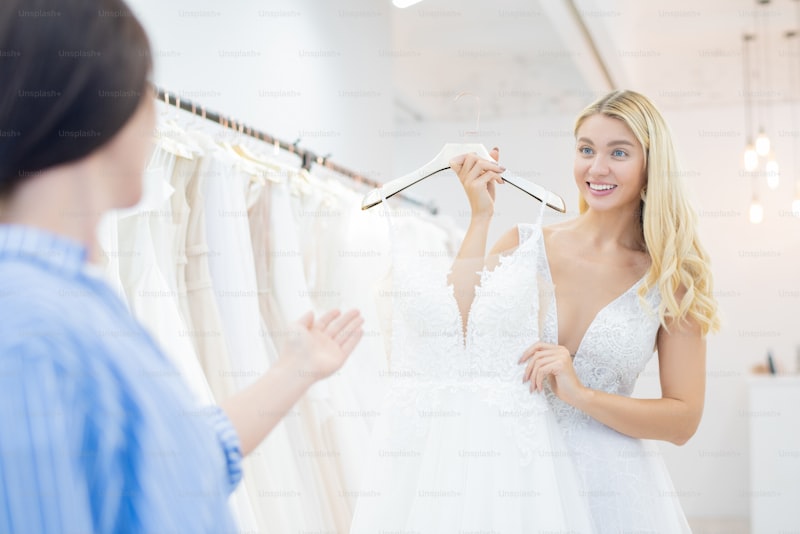Understanding Bridal Dress Pricing: A Comprehensive Guide for Brides-to-Be
Introduction
Choosing the perfect bridal dress is one of the most significant aspects of wedding planning. However, understanding bridal dress pricing can often be overwhelming for brides-to-be. With a myriad of options available, ranging from affordable to high-end designer gowns, it’s crucial to have a clear grasp of what influences the cost of bridal dresses. This article will walk you through the various factors that affect bridal dress pricing, offer insights into budgeting, and provide tips on how to find the perfect dress without breaking the bank.
The Factors Influencing Bridal Dress Pricing
Before diving into the specifics of bridal dress pricing, it's essential to understand the factors that contribute to the overall cost. Here are some critical elements that can influence pricing:
| Factor | Description |
| Designer Brand | Renowned designers usually charge a premium for their name and reputation. |
| Fabric and Material | High-quality fabrics such as silk and lace are more expensive than synthetic materials. |
| Style Complexity | Intricate designs, detailed embellishments, and custom features raise the price. |
| Location | Bridal shops in metropolitan areas tend to have higher pricing than those in rural locations. |
| Alterations and Customization | Many dresses require alterations, which can add to the total cost. |
| Season and Timing | Bridal dresses may be cheaper during off-peak seasons or clearance sales. |
Budgeting for Your Bridal Dress
Creating a budget for your bridal dress is essential to avoid overspending. Here’s how you can effectively budget for your gown:
1. Set a Realistic Budget
Start by determining how much you can afford to spend on a bridal dress without compromising other wedding essentials. Generally, it's advisable to allocate about 10-15% of your overall wedding budget to the dress.
2. Research Average Costs
The average cost of a bridal dress can vary significantly based on location and style. In the United States, for instance, brides typically spend between $1,000 to $3,000 for their Wedding gowns, but designer dresses can exceed $10,000. Understanding these averages can help you gauge what to expect as you shop.
3. Account for Additional Costs
Remember, the cost of the dress isn't the only expense you should consider. Be sure to include alterations, accessories (like veils and shoes), and cleaning fees after the wedding as part of your budget.
Finding the Right Dress at the Right Price
With a clear budget in mind, you can start your search for the perfect dress. Here are some effective ways to find a beautiful gown that meets your financial constraints:
1. Shop Sample Sales
Many bridal boutiques offer sample sales to clear out inventory. This can be a fantastic opportunity to snag a designer gown at a fraction of the price. Keep an eye on local bridal shops for announcements about upcoming sales.
2. Consider Pre-Owned Dresses
Buying a pre-owned bridal dress is a wise financial decision that allows you to opt for designers you may not have been able to afford brand new. Websites like Stillwhite or Nearly Newlywed feature listings of gently used gowns at discounted prices.
3. Explore Off-Season Shopping
Shopping for a bridal dress during off-peak seasons (typically late winter or early spring) can lead to significant savings. Many retailers offer discounts and promotions to encourage sales during these times.
4. Be Open to Custom Options
Sometimes, choosing a less established designer or opting for a smaller boutique can lower costs significantly. These designers often offer customization options without a hefty price tag. Look for local designers who may have creative and affordable options.
Common Questions About Bridal Dress Pricing
As you navigate the world of bridal dress shopping, you may have several questions. Here are some common inquiries brides-to-be often have:
1. What is the average cost of a designer wedding dress?
Prices for designer Wedding dresses can range from $2,000 to $10,000 or more depending on the designer and the gown's complexity. It’s essential to research designers you are interested in to get a better understanding of their pricing.
2. How much should I budget for alterations?
On average, brides can expect to pay anywhere from $200 to $600 for alterations, depending on the complexity of the changes needed. It is crucial to factor this into your overall bridal dress budget.
3. When should I start shopping for my bridal dress?
It’s advisable to start shopping for your bridal dress at least 6 to 12 months before your wedding date. This gives ample time for fitting adjustments and any potential delays in production.
4. Can I save money by buying my dress online?
While buying online can sometimes result in savings, it comes with risks such as sizing issues and lack of personal fitting services. If you decide to go this route, research reputable websites, and try to purchase dresses that come with a return policy.
Conclusion
Understanding bridal dress pricing is critical for every bride. By considering the various factors that influence gown costs, setting a realistic budget, and exploring ways to find the best deal, you can arrive at a solution that fits both your style and your wallet. Remember to keep an eye out for sales, consider pre-owned options, and think outside the box when it comes to designers. With thorough research and patience, you’ll be able to find a beautiful wedding dress that makes you feel incredible on your special day. Happy dress hunting!
